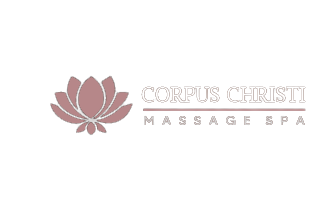Massage Therapy: A Proven Way to Manage Workplace Stress
We’ve all experienced the tension associated with stress in the workplace. Whether it’s from a tight deadline, an aggressive schedule or mundane everyday tasks, work-related stress has a tendency to hit us like a wave. Yet with massage therapy, you can manage the negative effects of stress in the workplace and restore your sense of wellbeing. In our post today, we’ll discuss the benefits of therapeutic massage and why it’s a proven way to conquer work-related stress. Let’s get started!
Quick Insight into Key Points
Massage therapy can help reduce physical tension from long periods of sitting and emotional stress from work demands. Studies have shown that it can also increase attention span, productivity, and creativity by decreasing anxiety and promoting relaxation.
What is Massage Therapy?
Massage therapy is defined as the systematic manipulation of soft tissues of the body in order to maintain and improve health. This includes techniques such as kneading, tapping, rubbing, vibration, effleurage, compression, and various forms of pressure. It involves different kinds of manual therapy that can help ease muscular pain and improve circulation. Some argue that massage therapy provides more than physical relief – it can also bring about emotional benefits as well.
The use of massage therapy in managing workplace stress can be seen from two different angles. On one hand, skeptics argue that there isn’t substantial evidence to definitively prove its efficacy in managing work-related tensions. On the other hand, many studies have indicated massage therapy can reduce both physical and psychological stress levels among employees where long working hours are inevitable. For instance, a cohort study conducted in the US found that 22 session of either Swedish or sports massage among healthcare workers resulted in considerable reductions in burnout levels over a one month period. Moreover, another study revealed that deep tissue massage was beneficial in improving quality of sleep among employees with high-stress jobs.
From these findings, it is clear that massage therapy has potential as an effective way to manage workplace stress. As such, it may be wise for employers to consider introducing this therapeutic modality into their wellness programs in order to alleviate work-induced fatigue and enable their team members to perform at their best. To best understand what the benefits massage therapy may bring about for the workplace environment, we need to take a closer look at its implications for reducing occupational stress and improving productivity – something we will address next.
Must-Know Points to Remember
Massage therapy has shown potential effectiveness in managing workplace stress, reducing burnout and fatigue, and improving sleep. Businesses should consider introducing massage therapy into their wellness programs to reduce occupational stress and offer employees the chance to perform at their best. Future research should focus on further examining the implications for productivity.
Benefits of Massage Therapy for the Workplace
As massage therapy has grown in popularity, its benefits are being realized in the workplace. It has been proven to reduce stress, anxiety, depression and physical aches as well as improve overall well-being. Companies are recognizing that employees who are physically and mentally well, can lead not only to improved job satisfaction but also increased productivity. When an employee faces an environment of high stress and long hours, their mental health and physical health can suffer. Massage therapy offers a solution and beneficial way to manage this stress.
Massage therapy provides many physiological benefits such as reducing chronic muscle tension, improving flexibility, boosting circulation and lymphatic flow, calming the nervous system, reducing pain in muscles and joints, as well as increasing serotonin production which helps with mood improvement. The psychological benefits include reducing stress levels, providing relaxation and ultimately improving overall job performance. All of these benefits are essential for job satisfaction among employees and can dramatically boost productivity in the workplace.
Because massage is noninvasive and non-addictive – unlike other forms of treatment for stress management such as prescription drugs – it is a particularly attractive option for employers looking for how to best support their employees. There are many pros and cons when it comes to implementing massage therapy programs within organizations; however, the pros far outweigh any potential drawbacks since there is empirical evidence that shows massage therapy is effective in reducing stress levels among employees while improving job satisfaction and performance.
So while the decision should be taken on a case by case basis based on organizational needs, overall massage therapy can be a very powerful tool in helping employers manage employee stress levels in the workplace. With proper implementation of massage therapies into a work plan, organizations can create a supportive environment where their teams’ wellbeing is prioritized without sacrificing business goals. As businesses continue to explore how best to reduce workplace stress for maximum efficiency and growth, understanding the various ways that massage treatments can help will become increasingly important. Now let us turn our attention from the many benefits of massage therapy towards reducing those stress levels in the first place.
-
A study published in 2011 found that receiving massage therapy at least once a week resulted in a significant decrease in stress levels and improved mood among participants.
-
Another study from 2017 found that regular massage therapy sessions over a six month period resulted in a decrease in perceived stress, increased wellbeing, and improved quality of sleep.
-
According to the American Massage Therapy Association, research has demonstrated that massage therapy can help reduce headaches, anxiety, depression, fatigue and insomnia caused by workplace stress.
Reducing Stress Levels
As discussed, massage therapy has been proven to be an effective treatment for workplace stress with its many physical and mental benefits. However, it is not just the frequency of massage sessions that contribute to reducing stress levels, but also the environment itself. By embracing a workplace culture that encourages relaxation and healthy management of stress, employees can have an overall lower level of stress. This can be achieved by setting reasonable expectations on deadlines, allowing adequate vacation time, and introducing stress-reducing activities such as yoga or mediation classes – all of which support the use of massage therapy for high-stress individuals or situations.
If employers are hesitant about implementing these measures due to fears about decreased productivity or absenteeism, numerous studies have demonstrated a positive association between preventative stress management and improved job outcomes. One study found that a higher number of sick leaves was associated with employees with high stress levels in comparison to their low-stress counterparts [Source].
Therefore, decreasing stress levels via massage therapy can actually increase an employee’s wellbeing and productivity if accompanied by supportive work environments.
These findings highlight the importance of providing additional resources such as break rooms and meditation spaces within workplaces to manage stress more effectively. Combined with regular massage session, these self-care practices may help create a positive corporate culture where employees feel valued and supported – leading to fewer absences from work-related issues due to stress.
Now armed with the knowledge about how massage therapy can reduce workplace stress levels when coupled with preventative measures, let’s explore how massage therapy can improve health and psychological wellbeing.
Improving Health & Mental Health
The American Massage Therapy Association has also documented how massage therapy can be used to improve health and mental health. Massage can reduce pain, alleviate stress and help improve physical as well as emotional health. According to the Association, research suggests that massage interventions result in improved functioning of the cardiovascular, circulatory, and nervous systems. Moreover, studies have found that massage can boost various hormones including cortisol, dopamine, serotonin and oxytocin, all of which play an important role in regulating your overall emotional state.
At the other extreme is the argument that massage might lead to a false sense of well-being among those who use it exclusively as a way to manage their stress. This could distract from more comprehensive behavior change approaches such as regular exercise and balanced nutrition.
However, this point of view is often countered with evidence that shows massage can be an effective part of an overall wellness plan for addressing both physical and mental health needs. In one study, researchers concluded that offering just one session of massage therapy per week improved participants’ sleep quality and mood {AMTA}. Furthermore, additional research done at RUCINJ showed that “there was significant improvement in patients who received aromatherapy massage versus those who did not receive aromatherapy massage across domains measuring fatigue, depression/anxiety, self-esteem/social function, and quality of life” for a period of six months after treatment.
The proper use of massage therapy should thus be considered an important part of any holistically oriented stress management program for improving overall physical and mental health. With careful attention to evidence-based strategies and carefully chosen treatments like therapeutic massage, practitioners have the potential to help individuals drastically enhance their well-being and lead lives full of balance and vitality. Now let’s move on to look at how this same approach might catalyze tangible physical improvements in the body.
Enhancing Physical Fitness and Muscle Tone
The ability to manage workplace stress is integral to maintaining physical and mental health, and massage therapy is a tool many professionals are beginning to use in the workplace. Its focus on enhancing physical well-being by loosening tight muscles and improving muscle tone is becoming more desirable for employees who want to stay physically active while managing their stress.
This benefit of massage therapy has been proven in multiple studies. One study in particular showed that massage therapy not only reduced exercise induced muscle soreness but also improved joint range-of-motion and performance during physical activity. Consequently, massage therapy can improve both physical fitness and muscle tone over time when used consistently.

However, there is some debate about how much massage therapy actually contributes to overall physical fitness. Some point out that for self-care or basic relaxation purposes, muscle massages can still be beneficial; however, if someone wants to use massage as an actual form of exercise or workout, it may be necessary to supplement this with other forms of exercise.
Therefore, although massage therapy may be helpful when it comes to improving physical fitness and muscle tone because of its stress relief effects, additional forms of exercise may also need to be incorporated into one’s routine in order to fully reach goals of improving overall physical health. Yet regardless of this debate, one thing that should be acknowledged is how important it is to prioritize taking care of oneself when managing workplace stress so as not to ignore one’s physical condition while dealing with work related issues.
As such, massage therapy can offer employees a simple yet effective way of taking care of their bodies when trying to balance life and work demands. As the benefits associated with massage therapy continue to become more prominent in the professional world, it’s worth exploring the types of techniques available for people looking for a natural way of releasing tension in their bodies and minds as a way of managing stress in the workplace.
Types of Massage Techniques Used in the Workplace
When it comes to massage therapy in the workplace, there are a variety of techniques that can be employed to best address different stressors and increase overall wellbeing. One is Swedish massage, also known as relaxation massage, which uses circular strokes to help with loosening up tight muscles and tissues, which relieves tension and calms nerves. Deep tissue massage is another popular technique that is used to treat chronic pain and muscle stiffness. Even more specific kind of treatment is trigger point therapy, which targets certain areas of the body where muscles become knotted due to stress or injury. Ultimately, each type of technique should be tailored to the individual’s needs and preferences; individuals who are feeling particularly stressed may benefit from Swedish or deep tissue massages while those with a specific muscular issue can opt for trigger point therapy.
The debate regarding the types of massage techniques used in the workplace centers on determining the most effective methods for managing stress. On one hand, research suggests that Swedish massage yields positive outcomes, including reduced levels of the hormone cortisol which is associated with stress (NIH). Conversely, other studies suggest that combination therapies incorporating deep tissue massage into a program are better able to promote relaxation than activities such as exercise or stretching. Ultimately, both approaches have been shown to have emotional and physiological benefits, but it is important to recognize that each individual may demonstrate different reactions depending on their particular needs.
Regardless of disagreed opinion, utilizing professional massage in the workplace has been proven very helpful in managing stress. In addition to this, massage therapy creates an environment where employees feel cared for and valued in their workspace. With this in mind, it is important to assess who can truly benefit from this type of intervention in order to maximize its effectiveness and ensure a more productive work culture within organizations. For this reason we turn our attention now to exploring who would gain most from massage therapy at work.
Who Can Benefit from Massage Therapy at Work?
Massage therapy has been proven to be an effective way of managing workplace stress, but who exactly can benefit from it? The simple answer is that massage therapy can be beneficial for all types of workers. Desk-based office workers, manual laborers, and even those who spend a great deal of time in front of a computer show positive results when receiving regular massage sessions.
In the case of desk-based office workers, massage therapy can help reduce tension in their shoulders, neck, and upper back. This kind of relief is often necessary after prolonged periods of sitting at a desk with poor posture. Massage therapy can also help to reduce eyestrain and headaches caused by long hours spent staring at a computer screen.
Manual laborers also benefit from massage therapy due to the physical nature of their job. Heavy lifting and repetitive motions can lead to aches and pains in the lower back as well as tightness in the arms, legs and feet. Massage therapy helps to relieve this tension and increase range of movement for these individuals. It can also help improve their performance on the job if soreness or tightness affects the quality of their work.
Finally, those who spend a significant amount of time in front of a computer can find relief through massage therapy. With years spent staring at a single location on a desk, individuals experience pressure build up around the eyes, neck, and shoulder area which can result in blurred vision and headaches. Massage therapy helps release this pressure while also promoting better circulation which leads to improved tissue repair in the body.
Overall, practically anyone employed in any type of job role can benefit from massage therapy at work due to its ability to reduce tension, alleviate eye strain and improve circulation throughout the body. Regular massage sessions may also be able to improve employees’ performance by allowing them to work with less pain or discomfort while helping them focus more clearly on their tasks. As such, it is apparent that there are many ways that massage therapy can help individuals manage workplace stress and enhance their overall health and wellbeing.
Frequently Asked Questions
What types of massage techniques are most beneficial for managing workplace stress?
The most beneficial massage techniques for managing workplace stress include Swedish massage, Shiatsu, and Trigger Point Therapy. Swedish massage helps to reduce physical tension and improve circulation while increasing feelings of calmness and relaxation. Shiatsu helps to release deep muscle tension by applying pressure to specific points on the body. Lastly, Trigger Point Therapy is effective in targeting areas of tightness and soreness in order to relieve stress and pain. All of these techniques are highly beneficial for managing workplace stress as they help relax the mind and body, reduce tension, and improve circulation.
How effective is massage therapy in reducing stress levels in the workplace?
Massage therapy has been shown to be an effective and proven way to reduce stress levels in the workplace. Numerous studies have demonstrated that massage can reduce stress hormones such as cortisol and adrenaline, as well as decrease fatigue, headaches, anxiety, depression and other physical complaints associated with stress <MayoClinic>. It increases endorphin levels that promote feelings of relaxation and happiness. Furthermore, research suggests that regular massage sessions can improve workplace morale and productivity by reducing muscle tension and improving circulation in the body. Therefore, it can be concluded that massage therapy is a highly effective way to manage stress in the workplace.
What types of massage techniques are best for reducing stress in the workplace?
The best types of massage techniques for reducing stress in the workplace are Swedish massage, deep tissue massage, and trigger point therapy. Swedish massage is great for relaxation and stress relief as it involves long, gentle strokes that help to relax the muscles and reduce tension in the body. Deep tissue massage targets deeper layers of muscles and connects tissue which helps with realigning the posture and improving overall function. Trigger point therapy works by targeting specific points on the body that can cause tension and pain, releasing built-up energy that can contribute to stress levels. Each of these techniques have been proven to help reduce stress and improve overall wellbeing in the workplace.
Lana Nunez
I am a Licensed Massage Therapist for Corpus Christi Massage Spa, CPR-certified CNA and Certified Medical Coder & Biller. I am compassionate, and always seeking the opportinity to provide outstanding patient care.






